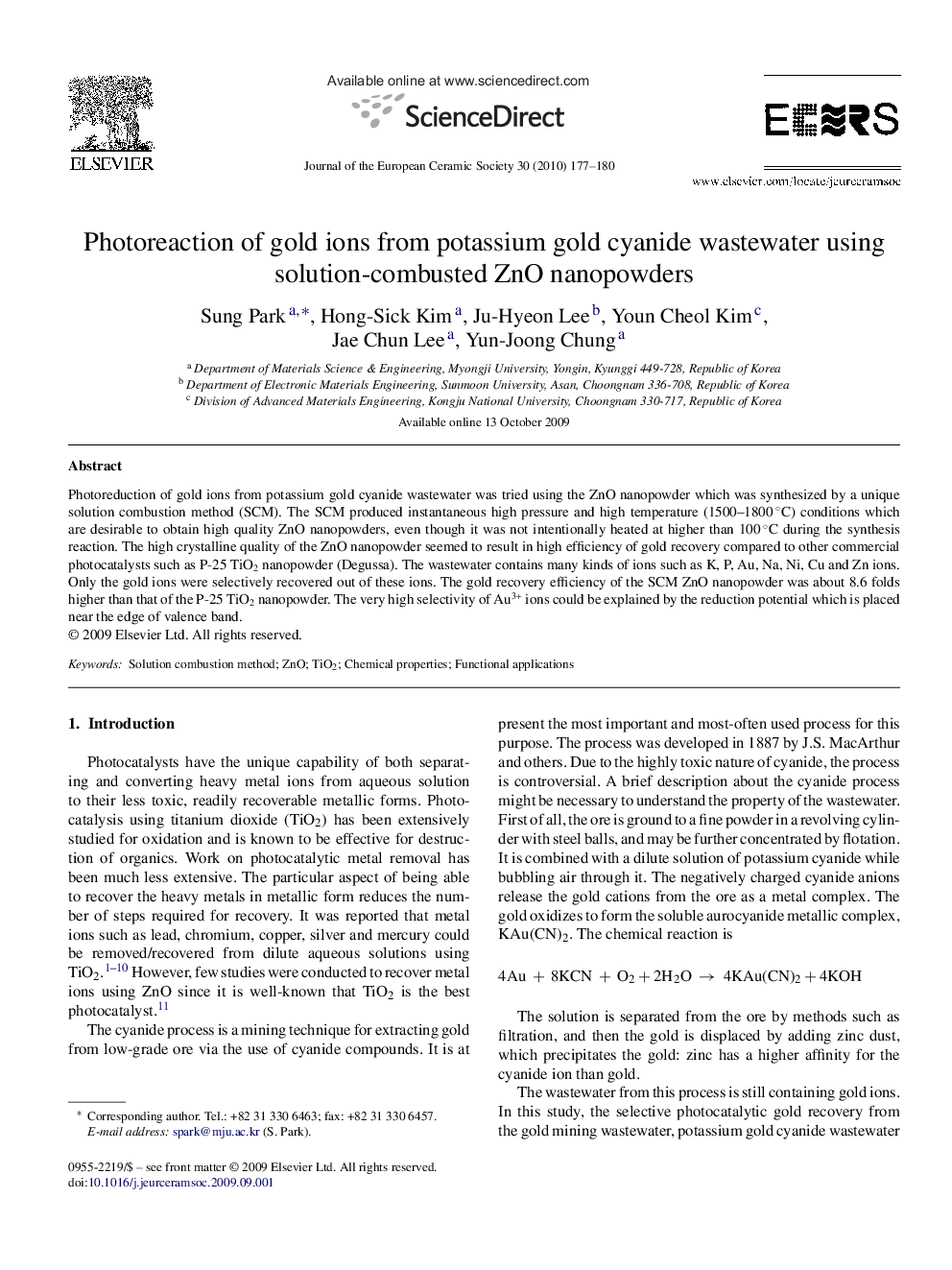| Article ID | Journal | Published Year | Pages | File Type |
|---|---|---|---|---|
| 1474946 | Journal of the European Ceramic Society | 2010 | 4 Pages |
Photoreduction of gold ions from potassium gold cyanide wastewater was tried using the ZnO nanopowder which was synthesized by a unique solution combustion method (SCM). The SCM produced instantaneous high pressure and high temperature (1500–1800 °C) conditions which are desirable to obtain high quality ZnO nanopowders, even though it was not intentionally heated at higher than 100 °C during the synthesis reaction. The high crystalline quality of the ZnO nanopowder seemed to result in high efficiency of gold recovery compared to other commercial photocatalysts such as P-25 TiO2 nanopowder (Degussa). The wastewater contains many kinds of ions such as K, P, Au, Na, Ni, Cu and Zn ions. Only the gold ions were selectively recovered out of these ions. The gold recovery efficiency of the SCM ZnO nanopowder was about 8.6 folds higher than that of the P-25 TiO2 nanopowder. The very high selectivity of Au3+ ions could be explained by the reduction potential which is placed near the edge of valence band.
